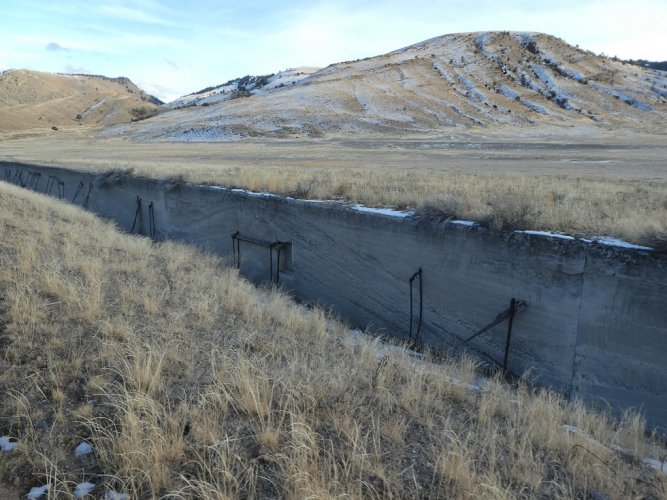dirtclod Az.
Well-known member
- Joined
- Jan 24, 2018
- Messages
- 2,776
So you are going to Montana to walk in circles? lol! 

Follow along with the video below to see how to install our site as a web app on your home screen.
Note: This feature may not be available in some browsers.
If you explore Yellowstone, take the Escape Creek Trail just south of Gardiner but in YNP. As you crest the first hill above the bridge on the creek, take a left to the north and you will see the teepee ring. Then look NE toward the river and you will see a linear berm. Hike over to see a US Cavalry shooting range.I'll be up in that portion of Big Sky country this summer, so maybe I'll swing back by and take a little more careful look.








If you’re in the neighborhood call, I can point you to a lot of interesting local ancient, and not so ancient history, pishkuns, rock driving lines, stone rings, ect..I was always told such circles where "teepee circles", but Eric's comments gave me pause. I did spend probably too much time this evening on Google Scholar (just as I often do for my "day job" as a college engineering professor), and I found several research papers discussing the archaeology of teepee rings across the western US and Canada. Some supported Eric's statement above, but many also supported (including written historical observations) the use of stones as boundary weights, and some further speculations about things such as burial circles and maybe spiritual circles. Anyway, one good compilation reference of historical observations, although admittedly a bit dated, is T.F. Kehoe (1960) STONE TIPI RINGS IN NORTH-CENTRAL MONTANA AND THE ADJACENT PORTION OF ALBERTA, CANADA: THEIR HISTORICAL, ETHNOLOGICAL, AND ARCHEOLOGICAL ASPECTS.
I'll be up in that portion of Big Sky country this summer, so maybe I'll swing back by and take a little more careful look.
Glad it’s still there! Hasn’t changed since I was a kid. Quite a few teepee rings in the valley too back then. Hope they are still there.If you explore Yellowstone, take the Escape Creek Trail just south of Gardiner but in YNP. As you crest the first hill above the bridge on the creek, take a left to the north and you will see the teepee ring. Then look NE toward the river and you will see a linear berm. Hike over to see a US Cavalry shooting range.
US Cavalry shooting range, circa 1886.
View attachment 216156
Sixth graders from Gallatin Gateway School searching for expended bullets on shooting range berm, only to be told to leave them for others to find.
View attachment 216158
Very cool brother. Imagine touching them and being vaulted back in in time....to see their faces, hear their voices, follow in their footsteps. My dad and I were buckskinners and traveled around the country for years and I often thought I had been born 150 yrs too late....These are a bunch of Pictographs and Petroglyphs from various places in Utah.
View attachment 129207
View attachment 129208
View attachment 129209
View attachment 129210
View attachment 129211
View attachment 129212
View attachment 129213
Your kidding right? You didnt remove a gravestone?
Looks like the native womens had needs too...lolMy buddy found this while we were scouting for Desert Sheep in Southern Utah a few weeks ago. We're pretty sure it's fossilized scat (coprolite) of some sort.
View attachment 188720
The guns that won the west colt, sharps and winchester